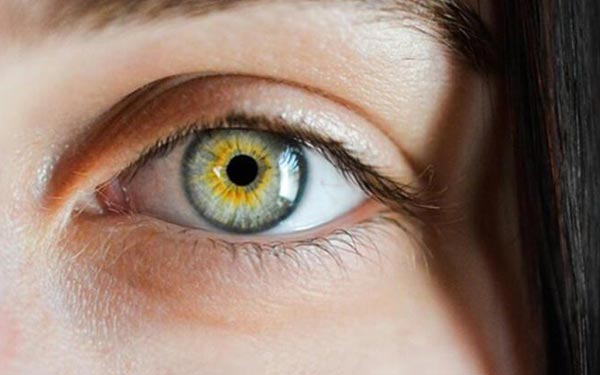What is Yellow Spot Disease?
 Yellow spot disease or age-related macular degeneration; It is the loss of central vision as a result of the progressive loss of receptor cells in the macula region (yellow spot) in the retina layer of the eye, which is responsible for the clearest vision.
Yellow spot disease or age-related macular degeneration; It is the loss of central vision as a result of the progressive loss of receptor cells in the macula region (yellow spot) in the retina layer of the eye, which is responsible for the clearest vision.
In people who develop macular degeneration, vision loss begins in the center of the visual field and the lost visual field develops towards the edges as the cells disappear over time. In other words, patients have a ring-shaped vision at the edges while seeing a dark spot in the center. Although patients do not lose their vision completely; severely impacted on quality of life.
Macular degeneration is one of the leading causes of vision loss especially in advanced ages. According to studies, approximately 10 million people in the United States are struggling with macular degeneration.
How Does Yellow Spot Disease Develop?
Age-related macular degeneration is basically divided into two different types in terms of its development mechanism. These are called dry macular degeneration and wet macular degeneration. These subforms are very important in making the definitive diagnosis of the disease and planning the treatments for it.
Dry Macular Degeneration
It is the most common type of yellow spot disease. This type is observed in 85-90% of yellow spot patients. In this form, small yellow substances called drusen accumulate in the macula region of the retina, damaging the macula and causing vision loss.
Wet Macular Degeneration
This form is seen in 10-15 percent of yellow spot patients. In this type, as a result of the development of abnormal blood vessels under the macula, the macular structure is damaged due to bleeding and extravasated fluids, and typical vision loss is experienced.
Besides these, juvenile macular degeneration, also known as Stargardt disease, as a third subtype; It is a type of yellow spot disease especially seen in children and young people.
What Causes Yellow Spot Disease?
The exact cause of macular degeneration is not known. However, several groups at high risk of developing macular degeneration have been identified. These groups can be listed as follows:
People aged 65 and over
•Women
People of European descent, white skinned, colored eyes
Those with a family history of macular degeneration
•Smokers
Those who are overweight
Those with a history of cardiovascular disease
•High blood pressure patients
High blood cholesterol
What are the Symptoms of Yellow Spot Disease?
Yellow spot disease is progressive. In this sense, the symptoms that occur in the early stage of the disease may not be noticed by the patient; In the future, the disease can be recognized with the exacerbation of the symptoms.
The following symptoms may be detected in a patient who develops macular degeneration:
Distortions in straight lines in the visual field
Loss of vision in the central visual field
Inability to see in low light, needing intense lighting
Blurred vision
Difficulty recognizing faces
Difficulty distinguishing colors
Although yellow spot disease is progressive; It does not cause complete blindness. In advanced stages, patients can see the edges of their visual fields even if they completely lose their central visual field.
How is Yellow Spot Disease Diagnosed?
There are various eye diseases and systemic diseases that can lead to vision loss in advanced ages. For this reason, the differentiation of macular degeneration depends on taking a detailed disease history and performing a detailed physical examination by a specialist physician.
In the examination, the fundus examination is usually performed under the light with the help of special instruments; In addition, the scope of the visual field is investigated with the help of different devices. In this way, the deterioration in the visual field can be detected and the presence of yellow spot disease can be questioned according to the type of deterioration. In the fundus examination, examinations are made for the subtype of macular degeneration. In order for this examination to be carried out comfortably, the physician may use an eye drop to dilate the pupil.
If the physician deems necessary, he may refer to additional laboratory and imaging tests. Among these examinations; There are methods such as fluorescent angiography, which allows the examination of the vascular structures in the retina by injecting special staining substances from the vein, and optical coherence tomography, which allows the detailed topographic structure of the retina to be examined.
What is done in the treatment of yellow spot disease?
In the current clinical approach, there is no definitive treatment for macular degeneration. However, treatment methods that slow down the progression of macular degeneration and increase the quality of life are applied. These methods vary depending on the subform of the disease.
In the treatment of dry macular degeneration, rehabilitation of patients with low vision is aimed. In addition, when the specialist physician deems it necessary, he may recommend a surgical treatment method. A telescopic lens is surgically inserted into the eye, which improves the visual field.
 Yellow spot disease or age-related macular degeneration; It is the loss of central vision as a result of the progressive loss of receptor cells in the macula region (yellow spot) in the retina layer of the eye, which is responsible for the clearest vision.
Yellow spot disease or age-related macular degeneration; It is the loss of central vision as a result of the progressive loss of receptor cells in the macula region (yellow spot) in the retina layer of the eye, which is responsible for the clearest vision.